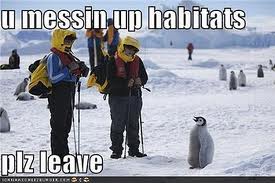 By train…
By train…
The train that takes on Alaska’s Mt McKinley

Unchallenged by neighbouring peaks, Mt McKinley rises like an apparition. (Gleb Tarro/Getty)
Just a few minutes earlier, cries of “Moose beside the track!” had managed to distract many of the Denali Star’s train passengers from their breakfast burritos. But that was nothing compared to the sight of Mount McKinley; coffee cups were pushed aside and, within seconds, nearly everyone had disappeared to the dome-roofed observation car upstairs. Moose sightings are two-a-penny in the Alaskan interior, an Anchorage resident later told me as I studied the lunch menu in the dining car. But the view of Mount McKinley’s 20,237ft summit – free from its usual blanket of bruised storm clouds – was a very rare occurrence.
McKinley – known in Alaska as “Denali”, which means “High One” in the native Athabaskan language – is the highest mountain in North America. It’s also the world’s third most topographically prominent, referring to the height of its peak compared to its lowest contour line, following Everest and Aconcagua. But unlike Everest, which is cocooned by other peaks on the Tibetan plateau, McKinley stands unchallenged, a solid wall of rock and ice rising like an apparition above the wild taiga. On the hundred or so clear days a year when its summit is visible, McKinley is one of the most awe-inspiring sights on the continent.
My railway journey from Anchorage to Fairbanks stemmed partly from practical reasoning: in Alaska, roads can be rugged and driving is best left to the locals. Meanwhile, the Denali Star, with its salubrious dining car and enthusiastic, knowledgeable rail staff, felt positively luxurious. The train even has an onboard “museum” with old photos and placards detailing its development.
Alaska was a little-explored US territory when President Woodrow Wilson’s administration bailed out the bankrupt North Alaskan Railroad in 1914, proposing to expand the still-nascent line north into the subalpine interior. The ambition and difficulty of the plan was unprecedented: it required cutting a trail from Seward, on Alaska’s Pacific coast, 470 miles north to the rough-and-ready gold rush town of Fairbanks, stopping in what soon would become the city of Anchorage on the way. Winter’s 20 hours of darkness each day, temperatures as low as -60F and ground frozen solid by permafrost all hampered work during the decade-long project, but president Warren Harding – the first US president to visit Alaska during his tenure – had the honour of driving in the railway’s last golden spike in July 1923.
A century after its conception, the railroad has survived, carrying freight, backcountry “commuters” and travellers through landscapes that have remained largely the same.

The train takes on some of Alaska’s widest, wildest landscapes. (Glenn Aronwits/Alaska Railroad)
Gazing out of the carriage window, the wide, open spaces made me feel small and insignificant. Huge swathes of Alaska are bereft of roads, people or mobile phone reception, a notion that can invoke a creeping nervousness in visitors from crowded cities “down south”. It wasn’t long before an overexcited family from the Lower 48 started yelling “moose” and “bear” at any swaying tree branch that moved. It was only after they had disappeared to the dining car that I saw a real moose scurrying through the greenery, away from the oncoming train.
North of our first station – the small, mall-infested town of Wasilla where Sarah Palin cut her political teeth as mayor from 1996 to 2002 – the fauna-spotting was replaced by the trip’s gripping highlight: the appearance of Mt McKinley. Several well-equipped hikers disembarked at the next stop in the nearby mountaineering town of Talkeetna; the mayor of which, a deadpan receptionist at my Anchorage hotel informed me, is a 17-year-old cat named Stubbs. Suspecting an Alaskan wind-up, I made some internet investigations, but it was no joke. Stubbs even has his own Wikipedia page.

A cabin in Talkeetna, where the scenery is stunning and a cat is mayor. (Rob Blakers/Getty)
Passengers can alight at Talkeetna and change to the Hurricane Turn, a slower, local train geared towards transporting the wilderness-hardened Alaskans who own cabins in the road-less interior between Talkeetna and the gorge of Hurricane Gulch. The Turn offers an unusual “flag-stop” service, meaning passengers can stand anywhere along the track and signal the train to stop. This system allows backpackers to jump off the train for a day or two’s hiking, fishing and camping before returning to the track and waving something large and white (a t-shirt will do) when the train reappears.

The Hurricane Turn takes on Alaska’s road-less interior. (Dirk HR Spennemann/Alaska Railroad)





















Posted by Rachel M on October 12, 2014 at 9:32 am
Magnificent scenery.
LikeLike
Posted by argentumvulgaris on October 12, 2014 at 1:22 pm
>Rachel, I would love to do a journey like this… 🙂
AV
LikeLike
Posted by Nature Ramble | The blog of COOPER APPAREL. Find us at https://www.facebook.com/Coopertees on October 12, 2014 at 5:36 pm
[…] Nature Ramble […]
LikeLike